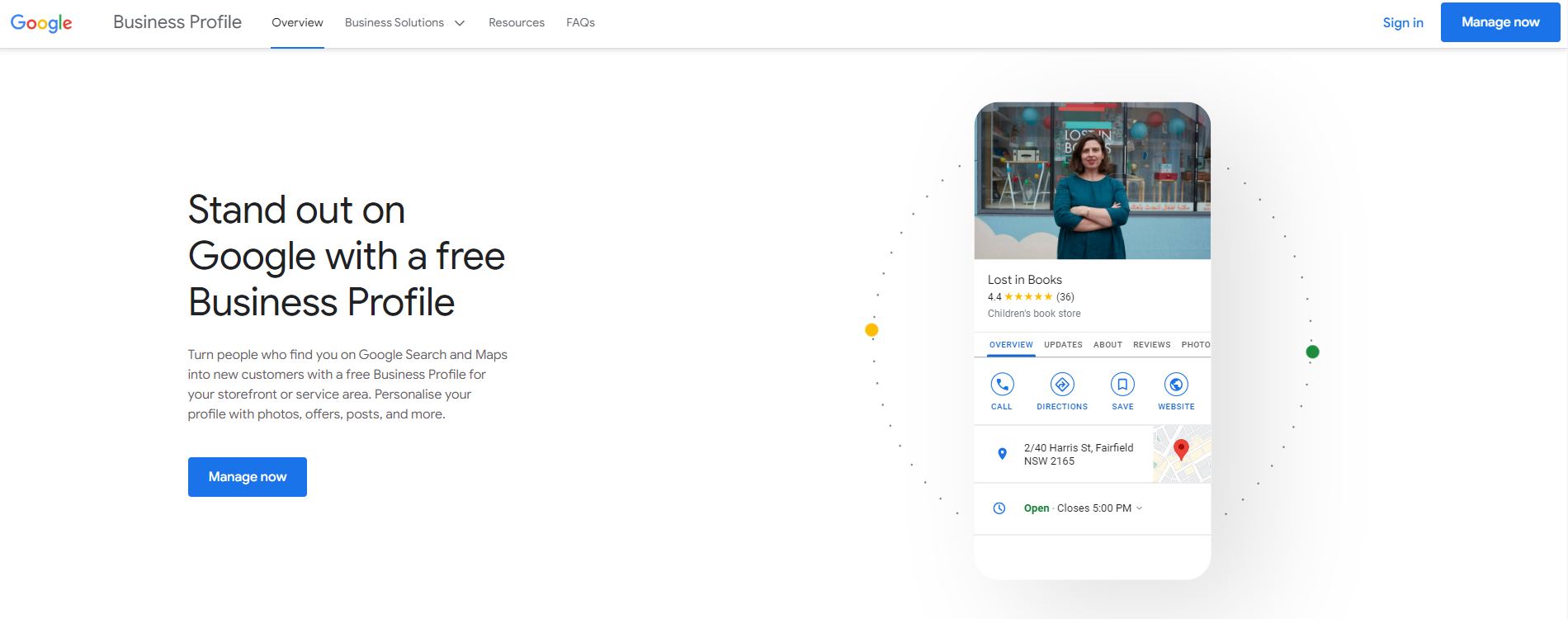Navigating the digital marketing landscape as a new NDIS provider can be tough. By using the right digital marketing strategies, you can build and grow your online presence, generate leads and grow your business effectively. Here are seven digital marketing tips designed especially for new NDIS providers looking to attract participants and grow their NDIS or allied health business:
1. Understand your target audience

Before diving into digital marketing strategies, NDIS providers need to conduct thorough research to understand their target audience. This involves identifying the demographics of their potential clients, such as age, location, interests, and needs. Creating detailed buyer personas helps in representing the ideal customers, incorporating factors like goals, challenges, and preferences. Engaging with existing NDIS participants through surveys, interviews, and focus groups provides valuable insights into their experiences and expectations.
- Conduct thorough research to identify the demographics of your target audience, including age, location, interests, and needs.
- Create detailed buyer personas that represent your ideal customers, incorporating factors such as goals, challenges, and preferences.
- Engage with existing NDIS participants to gather insights into their experiences, feedback, and expectations.
- Analyse market trends and competitor strategies to understand the competitive landscape and identify gaps in the market.
- Utilise surveys, interviews, and focus groups to gather direct feedback from potential clients and refine your understanding of their needs.
- Monitor social media interactions, comments, and reviews to gauge public sentiment and identify common pain points.
2. Invest in quality website design

A professional website is important for making a good first impression. A good website can help you rank higher in search engine results pages (SERPs), help you stand out in the crowd, and convert traffic into leads. Easy navigation, clear calls-to-action (CTAs), quick loading times, and high-quality media are key for a great website design.
When designing a website, consider the following key components:
- Ensure your website has a clean and visually appealing design that reflects your brand identity and values.
- Use a responsive web design to ensure optimal viewing experience across various devices, including smartphones, tablets, and desktops.
- Prioritise user-friendly navigation with clear menus, intuitive layout, and easy access to key information.
- Include prominent calls-to-action (CTAs) that guide visitors towards desired actions, such as booking a consultation or signing up for updates.
- Optimise loading speed by compressing images, minifying code, and leveraging caching techniques to improve user experience.
- Choose a colour scheme that is visually appealing and aligns with the NDIS colour palette for consistency and accessibility.
- Incorporate high-quality images and videos that showcase your services, team members, and success stories to build credibility.
- Implement SEO best practices, such as using relevant keywords, meta tags, and structured data markup to improve search engine visibility.
- Ensure accessibility features are in place, such as alt text for images, descriptive headings, and keyboard navigation options for users with disabilities.
- Include a blog section to provide valuable resources, updates, and insights related to NDIS services and disability support.
- Implement security measures, such as SSL certificates, regular backups, and secure payment gateways, to protect user data and build trust.
- Display client testimonials, reviews, and case studies to showcase the impact of your services and build credibility with potential clients.
- Provide multiple contact options, including phone numbers, email addresses, and contact forms, for easy communication with visitors.
3. Leverage website SEO

Search Engine Optimization (SEO) is important for enhancing the visibility of a website for an NDIS provider on search engines. Keyword research helps find relevant terms potential clients might use. Optimising meta tags, producing informative content, internal linking, and tracking website performance with tools such as Google Analytics are crucial for successful SEO strategies.
When implementing an SEO strategy, consider the following key components:
- Conduct keyword research to identify relevant terms and phrases that potential clients may use to search for NDIS services.
- Optimise your website’s meta tags, including title tags, meta descriptions, and headings, with targeted keywords to improve search engine visibility.
- Create high-quality, informative content that addresses common questions, concerns, and topics related to NDIS services.
- Use internal linking to connect related pages and improve website navigation for both users and search engines.
- Optimise images with descriptive filenames, alt text, and captions to enhance accessibility and improve SEO.
- Ensure your website has a clear site structure with logical hierarchy and organised content to facilitate search engine crawling and indexing.
- Monitor and analyse your website’s performance using tools like Google Analytics to track key metrics such as traffic, bounce rate, and conversions.
- Build high-quality backlinks from reputable websites within the healthcare and disability support industry to improve your website’s authority and ranking.
- Regularly update your website with fresh content, news updates, and blog posts to demonstrate expertise and relevance to search engines.
- Optimise your website for local SEO by including location-specific keywords, creating local landing pages, and getting listed in online directories.
- Utilise schema markup to provide search engines with additional context about your content, such as services offered, reviews, and contact information.
- Monitor keyword rankings regularly to track your progress, identify opportunities for improvement, and adjust your SEO strategy accordingly.
- Optimise your website’s loading speed by compressing images, minifying code, and leveraging browser caching to improve user experience and SEO performance.
- Implement a mobile-friendly design to ensure your website is accessible and easy to use on smartphones and other mobile devices, which can positively impact SEO rankings.
Related: How much does it cost to become an NDIS provider?
4. Run effective Facebook ads to generate leads

Facebook advertising is one of the most powerful marketing strategy to reach potential clients and generate leads. Before starting ad campaigns, NDIS providers should set clear goals focused on lead generation. Targeting specific audience groups using demographics, creating engaging ad text, using attractive visuals or videos, and testing various ad versions are crucial for successful Facebook ads.
When running paid ads, consider the following key components:
- Define clear objectives for your Facebook ad campaign, focusing on generating leads rather than just increasing likes or engagement.
- Use Facebook’s lead generation ad format to create ads that allow users to submit their contact information directly within the platform.
- Target your ads to a specific audience segment that is most likely to be interested in your NDIS services, based on demographics, interests, and behaviour.
- Create compelling ad copy that highlights the value proposition of your services and encourages users to take action by providing their contact details.
- Use eye-catching visuals or videos that grab users’ attention and effectively communicate the benefits of engaging with your NDIS services.
- Include a strong call-to-action (CTA) in your ad copy that clearly prompts users to sign up, request a consultation, or learn more about your services.
- Test different ad variations, including copy, visuals, CTAs, and targeting options, to identify the most effective combinations for lead generation.
- Utilise Facebook Pixel to track conversions and optimise your ads for lead generation based on real-time data and insights.
- Set up a customised lead form within Facebook that collects the specific information you need from potential leads, such as name, email, and phone number.
- Implement retargeting campaigns to reach users who have already interacted with your ads or visited your website, increasing the likelihood of lead generation.
- Monitor key metrics related to lead generation, such as cost per lead, conversion rate, and lead quality, to assess the effectiveness of your Facebook ads.
- Use A/B testing to compare different ad elements and strategies to continuously improve the performance of your lead generation campaigns.
- Implement a follow-up strategy to nurture leads captured through Facebook ads, such as personalised email sequences or phone calls to convert them into clients.
- Analyse the data from your lead generation campaigns to identify trends, optimise your targeting strategies, and refine your messaging for better results.
- Continuously refine and iterate on your Facebook ad campaigns based on insights gained from data analysis and user feedback to maximise lead generation effectiveness.
5. Optimise your Google Business Profile

Don’t ignore the power of Google Business Profile as this can help you get a tons of enquiries without much efforts. NDIS providers should claim and verify their listings on Google to ensure accurate information is displayed. Showcasing high-quality images, encouraging reviews, utilising insights, and timely communication through messaging feature are essential for optimising Google Business Profile.
Google Business Profile (formerly Google My Business) is a valuable tool for NDIS providers to manage their online presence and connect with potential clients.
Here are some tailored tips on how NDIS providers can effectively leverage Google Business Profile:
- Claim and verify your NDIS provider listing on Google to ensure that you have control over the information displayed about your services.
- Ensure that all information on your Google Business Profile is accurate and comprehensive, including your NDIS provider name, address, phone number, website, and service areas.
- Showcase high-quality images that highlight your NDIS services, team members, facilities, and client success stories to make your listing more engaging and informative.
- Encourage NDIS participants to leave reviews on your Google Business Profile to build trust and credibility within the disability support community.
- Monitor and respond to reviews promptly, demonstrating your commitment to quality service and client satisfaction in the NDIS sector.
- Use Google Posts to share updates, events, success stories, and relevant NDIS information to engage with clients and showcase your expertise.
- Analyse insights provided by Google Business Profile to understand how NDIS participants discover and interact with your listing, helping you tailor your services effectively.
- Utilise the messaging feature to communicate directly with potential clients who have inquiries about your NDIS services, providing timely and helpful responses.
- Enable the booking feature if applicable, allowing NDIS participants to schedule consultations or appointments with your services directly from your Google Business Profile.
- Respond promptly to messages and enquiries to demonstrate your commitment to client care and support within the NDIS community.
- Engage with NDIS participants through the Q&A feature on Google Business Profile to address common queries and provide valuable information about your disability support services.
- Keep your Google Business Profile updated with relevant keywords, categories, and service offerings to enhance visibility in search results for NDIS-related queries.
- Use insights from Google Business Profile to identify trends, client preferences, and areas for improvement in your NDIS services and online presence.
- Monitor any suggested edits or updates made by users to ensure that the information displayed on your Google Business Profile accurately represents your NDIS provider services and offerings.
6. Develop a comprehensive marketing plan for long-term growth

To create a successful marketing plan, NDIS providers should conduct thorough market research to understand their target audience, competitors, and industry trends. Setting clear and measurable marketing goals aligned with business objectives is crucial. Developing detailed buyer personas, highlighting unique value proposition, and implementing multi-channel marketing approach are key components of a comprehensive marketing plan.
To develop a comprehensive marketing plan for NDIS providers, consider the following key components:
- Conduct market research to understand the NDIS landscape, target audience, competitors, and industry trends.
- Identify the needs, preferences, and challenges of NDIS participants to tailor your services and messaging effectively.
- Define clear and measurable marketing goals that align with your business objectives, such as increasing client base or expanding service reach.
- Set SMART (Specific, Measurable, Achievable, Relevant, Time-bound) objectives to track progress and success.
- Create detailed buyer personas representing your ideal NDIS participants, considering demographics, interests, behaviours, and needs.
- Segment your audience based on specific criteria to tailor marketing strategies and messages for different groups.
- Define and articulate your NDIS services, unique value proposition, and competitive advantage in the market.
- Highlight the benefits and outcomes of your services to attract and retain NDIS participants.
- Develop a multi-channel marketing approach that includes digital marketing, social media, content marketing, email campaigns, networking, and community engagement.
- Utilise SEO, social media advertising, Google Business Profile, and other online platforms to increase visibility and reach within the NDIS community.
- Allocate a budget for marketing activities based on your goals and target audience reach.
- Identify resources needed for implementation, such as personnel, tools, technology, and external support.
- Create a detailed timeline with specific action steps, responsibilities, and deadlines for each marketing initiative.
- Implement a content calendar for regular updates, promotions, events, and communications to engage with NDIS participants consistently.
- Monitor and analyse data from various marketing channels to track performance, identify trends, and make informed decisions for future strategies.
- Establish key performance indicators (KPIs) to measure the success of your marketing efforts, such as lead generation, conversion rates, website traffic, and client retention
- Adjust strategies based on insights gathered from data analysis, feedback from NDIS participants, and changes in the market environment.
- Regularly review the effectiveness of your marketing plan against set goals and KPIs.
By developing a comprehensive marketing plan tailored to the needs of NDIS providers, you can effectively promote your services, connect with NDIS participants, and grow your business within the disability support sector.
7. Hire a results-oriented digital marketing agency
Finding the right digital marketing agency is important for NDIS providers to achieve their marketing goals effectively. Prioritising agencies with experience in the disability support sector, proven track record of delivering results, and emphasis on data-driven decision-making is essential. Communication style, responsiveness, level of support, transparency, and commitment to staying ahead of industry trends are factors to consider when hiring a digital marketing agency.
- Look for an NDIS digital marketing agency with experience in the disability support sector or working with healthcare organisations to ensure they understand the unique needs and challenges of NDIS providers.
- Prioritise agencies with a proven track record of delivering results for similar clients, including case studies, testimonials, and client references that demonstrate their success.
- Seek agencies that offer a comprehensive range of digital marketing services, including SEO, social media, content marketing, PPC advertising, and website design, to cover all aspects of your marketing needs.
- Choose an agency that emphasises data-driven decision-making, analytics, and reporting to track progress, measure success, and continuously improve marketing strategies.
- Consider agencies that offer customised solutions tailored to your specific goals, target audience, and budget constraints, rather than one-size-fits-all packages.
- Evaluate the agency’s communication style, responsiveness, and level of support to ensure effective collaboration and clear understanding of your business objectives.
- Discuss key performance indicators (KPIs) and measurable goals upfront to align expectations, monitor progress, and hold the agency accountable for results.
- Look for agencies that prioritise transparency, honesty, and ethical practices in their marketing approach to build trust and long-term partnerships.
- Consider agencies that provide regular updates, reports, and insights on campaign performance, allowing you to make informed decisions and adjustments based on real-time data.
- Choose an agency that is proactive, innovative, and committed to staying ahead of industry trends, algorithm changes, and emerging technologies to keep your marketing strategies effective and competitive.
The digital marketing landscape offers immense opportunities for NDIS providers to enhance their visibility, connect with their target audience, and ultimately grow their businesses. By implementing the right digital marketing strategies, NDIS providers can navigate the challenges effectively and reap the rewards of a well-executed marketing strategy.
